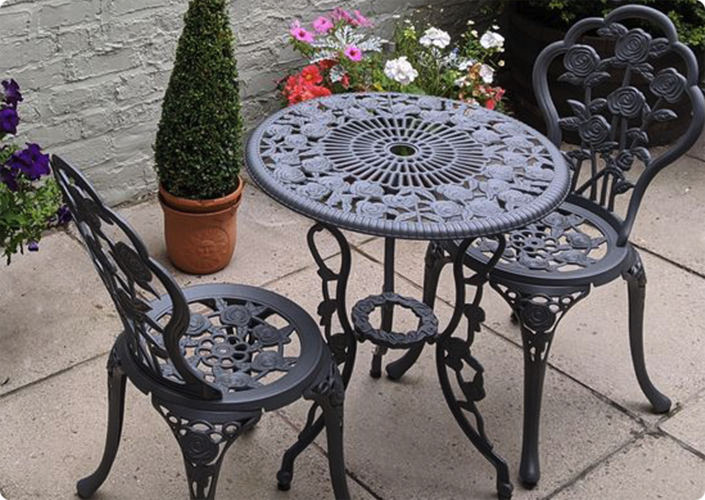Aluminum Window Profiles for Enhanced Durability and Modern Aesthetics
Aluminium Profiles for Windows A Comprehensive Overview
Aluminium profiles have gained immense popularity in modern architecture and design, particularly for windows. Their unique characteristics, such as durability, lightweight nature, and resistance to corrosion, make them an ideal choice for both residential and commercial buildings. In this article, we will explore the advantages of aluminium profiles for windows, their manufacturing process, and the various design options available.
Advantages of Aluminium Profiles for Windows
1. Durability One of the most significant benefits of using aluminium profiles for window frames is their longevity. Unlike wood, which can warp, crack, or rot over time, aluminium is inherently resistant to the elements. This durability means that windows made from aluminium require less maintenance and have a longer lifespan.
2. Lightweight yet Strong Aluminium is an incredibly lightweight material, which makes handling and installation easier. Despite its lightness, it is also very strong, allowing for larger glass panes and more slender frames without compromising structural integrity.
3. Corrosion Resistance Aluminium naturally forms a protective oxide layer that helps guard against corrosion. This feature is particularly beneficial in coastal areas where salt and moisture can lead to accelerated deterioration of materials. Anodized finishes can further enhance this property, ensuring that windows maintain their appearance and functionality over time.
4. Energy Efficiency Modern aluminium window profiles can be designed with thermal breaks, which are insulating materials that prevent heat transfer between the interior and exterior. This innovation significantly improves the energy efficiency of buildings, helping to regulate indoor temperatures and reduce heating and cooling costs.
5. Aesthetic Versatility Aluminium profiles can be tailored to a wide range of architectural styles and preferences. They can be easily powder-coated or painted in various colors to match any design aesthetic, whether modern, traditional, or minimalist. Additionally, aluminium can be shaped into complex designs, offering architects and builders greater flexibility in creating unique and visually appealing structures.
Manufacturing Process of Aluminium Profiles
The manufacturing of aluminium profiles involves several key steps
1. Extrusion The primary method for creating aluminium profiles is through an extrusion process. This involves heating aluminium billets to a malleable state and forcing them through a die to create long profiles of the desired shape and size.
aluminium profiles for windows

3. Finishing The finishing process involves anodizing or powder-coating the aluminium profiles to enhance their corrosion resistance and aesthetic appeal. Anodizing involves electrochemically treating the surface to create a durable oxide layer, while powder-coating involves applying a powdered paint that is then cured to form a tough, colored finish.
4. Assembly After finishing, the profiles are assembled with other window components, such as glazing and hardware, to create the final product. This assembly process may vary depending on the specific design and functionality of the window.
Design Options
Aluminium profiles offer a myriad of design possibilities for windows
1. Sliding Windows These windows feature horizontal sliding sashes that are easy to operate and ideal for maximizing natural light and ventilation while maintaining a sleek appearance.
2. Casement Windows Hinged on one side, casement windows open outward to provide excellent ventilation and unobstructed views. Aluminium profiles can create slim frames that enhance the glass area.
3. Bi-Fold Windows Bi-fold windows consist of multiple panels that fold neatly to one side, allowing for seamless indoor-outdoor living spaces. The use of aluminium profiles ensures structural stability while maximizing glass surfaces.
4. Picture Windows These are large fixed windows that do not open, designed primarily to provide expansive views and natural light. Aluminium frames can support large panes without the need for bulky framing.
Conclusion
Aluminium profiles for windows represent a perfect blend of functionality, aesthetics, and sustainability. With their numerous advantages, diverse design options, and resilience against the elements, aluminium windows are becoming an increasingly sought-after choice in contemporary architecture. As technology advances, we can expect even more innovative applications of aluminium in the construction industry, making it a cornerstone material for future design endeavors. Whether for a new build or a renovation project, aluminium profiles stand out as an exceptional solution for modern window applications.
-
Wrought Iron Components: Timeless Elegance and Structural StrengthNewsJul.28,2025
-
Window Hardware Essentials: Rollers, Handles, and Locking SolutionsNewsJul.28,2025
-
Small Agricultural Processing Machines: Corn Threshers, Cassava Chippers, Grain Peelers & Chaff CuttersNewsJul.28,2025
-
Sliding Rollers: Smooth, Silent, and Built to LastNewsJul.28,2025
-
Cast Iron Stoves: Timeless Heating with Modern EfficiencyNewsJul.28,2025
-
Cast Iron Pipe and Fitting: Durable, Fire-Resistant Solutions for Plumbing and DrainageNewsJul.28,2025
-
 Wrought Iron Components: Timeless Elegance and Structural StrengthJul-28-2025Wrought Iron Components: Timeless Elegance and Structural Strength
Wrought Iron Components: Timeless Elegance and Structural StrengthJul-28-2025Wrought Iron Components: Timeless Elegance and Structural Strength -
 Window Hardware Essentials: Rollers, Handles, and Locking SolutionsJul-28-2025Window Hardware Essentials: Rollers, Handles, and Locking Solutions
Window Hardware Essentials: Rollers, Handles, and Locking SolutionsJul-28-2025Window Hardware Essentials: Rollers, Handles, and Locking Solutions -
 Small Agricultural Processing Machines: Corn Threshers, Cassava Chippers, Grain Peelers & Chaff CuttersJul-28-2025Small Agricultural Processing Machines: Corn Threshers, Cassava Chippers, Grain Peelers & Chaff Cutters
Small Agricultural Processing Machines: Corn Threshers, Cassava Chippers, Grain Peelers & Chaff CuttersJul-28-2025Small Agricultural Processing Machines: Corn Threshers, Cassava Chippers, Grain Peelers & Chaff Cutters












